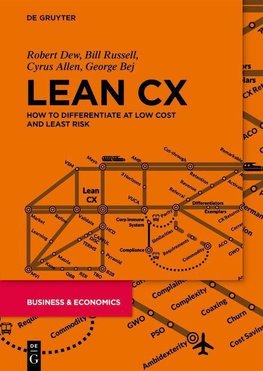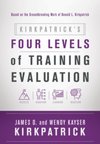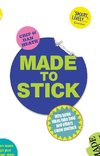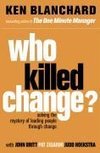
-
 Anglický jazyk
Anglický jazyk
Lean CX
Autor: Robert Dew
In recent years, many companies have realized customer experience (CX) is the new marketing battle ground. Substantial investments have been made to map customer journeys, identify pain points and improve CX to try and create cut-through. The sector... Viac o knihe
Na objednávku, dodanie 2-4 týždne
35.96 €
bežná cena: 39.95 €
O knihe
In recent years, many companies have realized customer experience (CX) is the new marketing battle ground. Substantial investments have been made to map customer journeys, identify pain points and improve CX to try and create cut-through. The sector started out with companies engaging consultants for research and design, but increasingly the focus is to create an internal customer experience team with executives responsible for driving customer satisfaction, referrals and revenue uplift. Whether insourced or outsourced, the typical process has revolved around the research and development of a customer journey map to help coordinate contact, sales, delivery and support across different business areas. Sadly, but perhaps not surprising, most of this promising investment in CX has been wasted.
After more than a decade of working with various companies to improve their CX, it is clear the difference between the winners and losers in the CX battle is not based on research quality or human centered design capability. The key requirement is execution. Because companies tend to report from bottom to top, but deliver across functional silos, it is very difficult to provide an exceptional customer experience. Such an experience goes beyond consistency of customer service - it is about doing something remarkable to get cut-through. Cut-through occurs when customers share their experiences with others to drive profitable revenue growth. Increasingly we have seen the companies who achieve cut-through prioritize market execution above research and design. In effect they do to find out, rather than find out to do.
This agile learning approach is at the core of Lean Management, which was originally developed at Toyota to reduce waste. Lean has been applied to many business areas, most notably start-up. This book describes how the tools from Lean can be applied to the CX innovation problem. At its core, Lean CX is about reducing the waste associated with providing experiences customers don't value enough to share. The real insight however relates to how Lean CX provides a pathway for companies to become ambidextrous. Few firms can allocate resources simultaneously to the competing demands their survival requires. On the one hand they must exploit their existing products, services, business models and markets in the short term to succeed. On the other hand they must explore new technologies, delivery, opportunities and horizons in the medium to longer term to survive. Exploiting is about learning how to do things right, which requires increased systematization for scale and consistency. Exploring is learning how to do the right things, which requires increased experimentation for discovery and novelty. Larger firms tend to be better at exploiting and newer firms tend to be better at exploring. Lean CX provides a way to do both.
This book draws on hundreds of CX design and strategic innovation projects across a range of industries both B2B and B2C from primary research through client work and secondary case studies available in the public domain. The examples include many different vertical industry sectors, with the most interesting involving hybrid business models. Many fast growing firms seem to be developing business models from a combination of online automation and traditional offline human based product and service delivery. The business has a commercial focus, but not-for-profit and government examples are occasionally cited where appropriate. In recent years CX has become more relevant for both of these sectors as sustainability of funding has become more a challenge. The cases included share what worked really well and where CX failed. But the content also goes beyond what actually happened to present an idea of what might be possible with the right design approach and committed resources.
- Vydavateľstvo: De Gruyter
- Rok vydania: 2021
- Formát: Hardback
- Rozmer: 246 x 175 mm
- Jazyk: Anglický jazyk
- ISBN: 9783110683684











